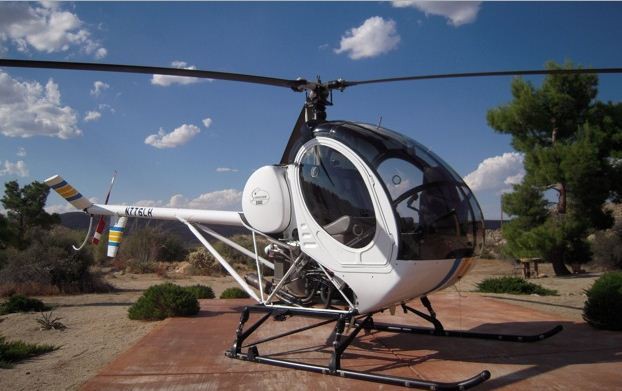| Picture |

|
| Manufacturer |
Schweizer
|
| Type |
300C
|
| Introduced |
5/1/1970
|
| In production? |
Yes
|
| Units produced |
0
|
| Price US $ |
280,000.00
|
| Overall Length |
30.83 ft
|
| Length |
0 ft
|
| Height |
8.72 ft
|
| Width |
4.25 ft
|
| |
|
| |
|
| Description |
In the 1950s, helicopter development matured. This was also the time that many entrepreneurs envisaged a world in which every home would have a helicopter in the garage. As a result, there were many initiatives and companies working on new small two seater helicopters. However, as we now know, this market didn't emerge and most initiatives never made it to full scale production.
One of the most positive exceptions in this era was the Hughes Model 269, which was later modified and rebranded as Model 300. This flying machine was a smart combination of a two-three seat configuration using a piston engine and a three-bladed, fully articulated rotorhead which gave a smooth ride. The basic design of the 269/300 model is still in use (after more than 50 years!) in the form of the newer 300C and 300CBi variants, which have mainly added an improved rotor system and engines. When it comes to reliability, the Schweizer 300 line has a very good reputation.
These days, the Model 300 is in use all over the world in a wide range of applications like flight instruction, sight-seeing and inspection flights.
In 1984, the rights to the Hughes helicopters were bought by McDonnell Douglas. Two years later, Schweizer, which already had a production licence for the Hughes 300C, bought the rights from McDonnell Douglas. In August 2004, Sikorsky acquired Schweizer and still sells the Model 300C line, adding the prefix “S” to the name in common with the Sikorsky naming schema.
|
| Advertisement |
|
| Design features |
- Aluminum tubular tailboom
- Steel tube fuselage
- Power transmitted from engine to transmission through eight belts
|
In the 1950s, helicopter development matured. This was also the time that many entrepreneurs envisaged a world in which every home would have a helicopter in the garage. As a result, there were many initiatives and companies working on new small two seater helicopters. However, as we now know, this market didn't emerge and most initiatives never made it to full scale production.
One of the most positive exceptions in this era was the Hughes Model 269, which was later modified and rebranded as Model 300. This flying machine was a smart combination of a two-three seat configuration using a piston engine and a three-bladed, fully articulated rotorhead which gave a smooth ride. The basic design of the 269/300 model is still in use (after more than 50 years!) in the form of the newer 300C and 300CBi variants, which have mainly added an improved rotor system and engines. When it comes to reliability, the Schweizer 300 line has a very good reputation.
These days, the Model 300 is in use all over the world in a wide range of applications like flight instruction, sight-seeing and inspection flights.
In 1984, the rights to the Hughes helicopters were bought by McDonnell Douglas. Two years later, Schweizer, which already had a production licence for the Hughes 300C, bought the rights from McDonnell Douglas. In August 2004, Sikorsky acquired Schweizer and still sells the Model 300C line, adding the prefix “S” to the name in common with the Sikorsky naming schema.
|
|
- Advertisement -
|
Design features:
- Aluminum tubular tailboom
- Steel tube fuselage
- Power transmitted from engine to transmission through eight belts
|
| Persons |
3
|
| Max. Range |
220 mi
|
| Cruise Speed |
90 mph
|
| Max. Speed |
109 mph
|
| Max. rate of Climb |
0 ft/min
|
| HOGE ceiling |
0 ft
|
| Service Ceiling |
12000 ft
|
| Gross Weight |
2050 lb
|
| Empty Weigt |
1100 lb
|
| Useful Load |
950 lb
|
| Fuel Capacity |
32 gallons
|
| Number of Engines |
1
|
| Engine Type |
Piston, fuel injected
|
| Engine Code |
Lycoming HIO-360-D1A
|
| Horse Power |
190
|
| Rotorhead |
Fully articulated with elastomeric dampers
|
| Number of rotorblades |
3
|
| Rotor Diameter |
26.83 ft
|
| Number of tail rotorblades |
2
|
| Tailrotor Diameter |
4.25 ft
|
|